Ellora (also spelled Elura) is a UNESCO World Heritage Site located near Aurangabad in Maharashtra, India. It’s one of the most remarkable examples of ancient rock-cut architecture in the world. Here’s a concise overview:
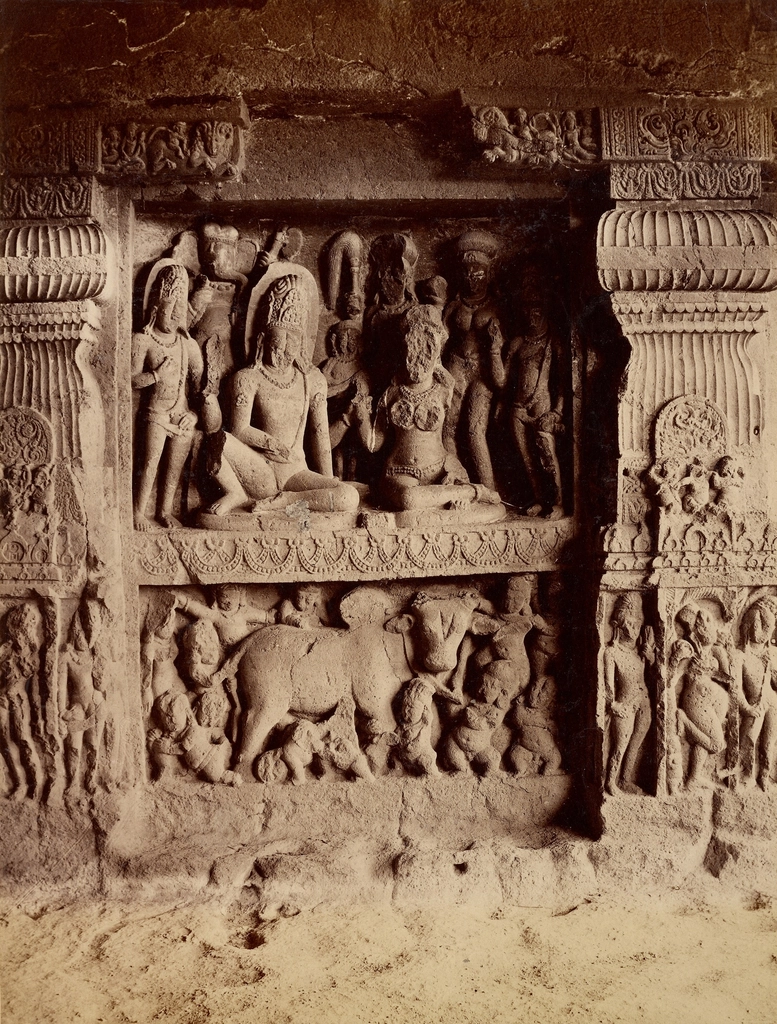
Overview
- Location: About 30 km from Aurangabad, Maharashtra
- Period: Built between 600 CE and 1000 CE
- Total Caves: 34 caves (out of over 100 in the area are open to public)
- Religions Represented: Buddhism, Hinduism, and Jainism — symbolizing India’s religious harmony.
Highlights
1. Ellora Cave 16 – Kailasa Temple, The crown jewel of Ellora
Cave 16 – Kailasa Temple, The crown jewel of Ellora
You are absolutely right. Cave 16, the Kailasa Temple at Ellora, is widely considered the “Crown Jewel of Ellora” and the pinnacle of Indian rock-cut architecture.
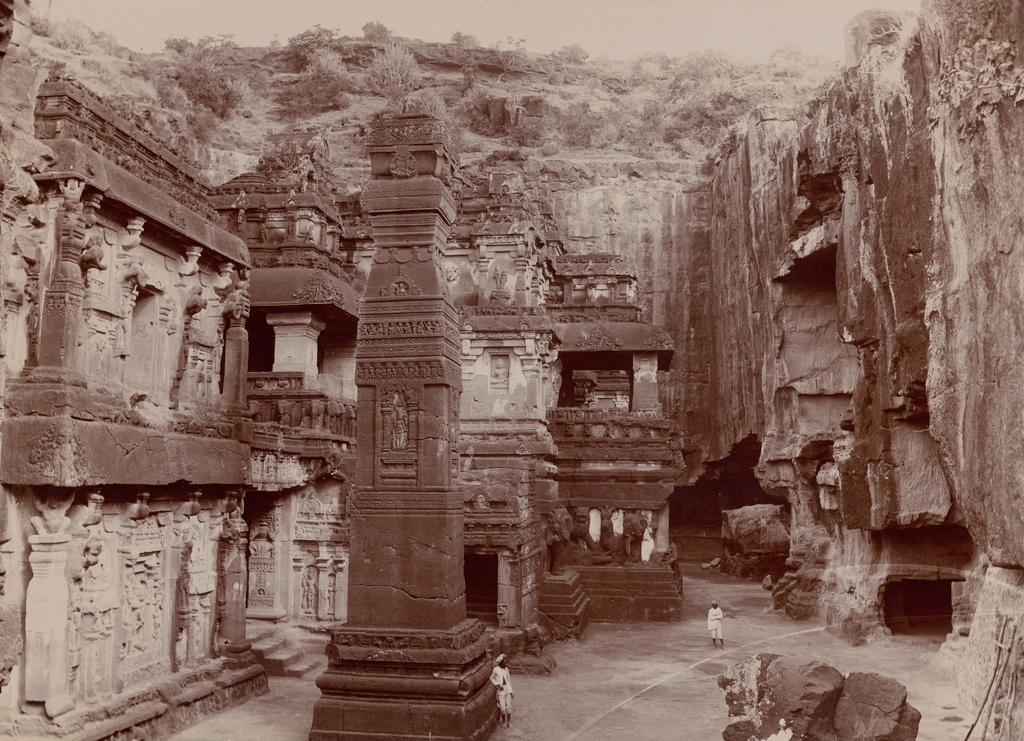
It earns this title for several astonishing reasons:
A. The World’s Largest Monolithic Structure
- Single-Rock Carving: Unlike other temples built from the ground up, the Kailasa Temple was excavated downwards from a single massive piece of basalt rock. This makes it the largest monolithic structure in the world.
- Massive Scale: It covers an area roughly twice the size of the Parthenon in Athens. Historians estimate that about 200,000 tonnes of rock were removed to carve out the temple, its courtyards, and its surrounding sculptures.
- Top-Down Construction: The carving was done vertically, starting from the top of the cliff face and working down to the base. This method required extraordinary skill, planning, and precision, as a single error could ruin the entire project.
B. Architectural Marvel and Symbolism
- Free-Standing Replica: The temple is a colossal rock-cut replica of a complete, free-standing structural temple, including the Vimana (main tower), Mandapa (pillared hall), and a separate Nandi Mandapa (pavilion for Shiva’s bull).
- Symbol of Mount Kailash: It is dedicated to Lord Shiva and is modeled to represent Mount Kailash, his mythical Himalayan abode.
- Elephant Plinth: The base of the main temple is carved with life-size elephants and lions that appear to be supporting the entire massive structure, giving it a stunning visual lightness.
C. Exquisite Sculptural Art
- The temple is covered floor-to-ceiling with intricate carvings depicting scenes from the Hindu epics, the Ramayana and the Mahabharata.
- The most famous sculpture is the dramatic panel showing the ten-headed demon king Ravana shaking Mount Kailasa while Lord Shiva calmly presses the mountain down with his toe.
- The temple also features colossal carvings of various deities, including the river goddesses Ganga and Yamuna.
2. Ellora Buddhist Caves (1–12)
The Ellora Caves complex includes 34 rock-cut structures, and the first twelve (Caves 1–12) are the Buddhist Caves.
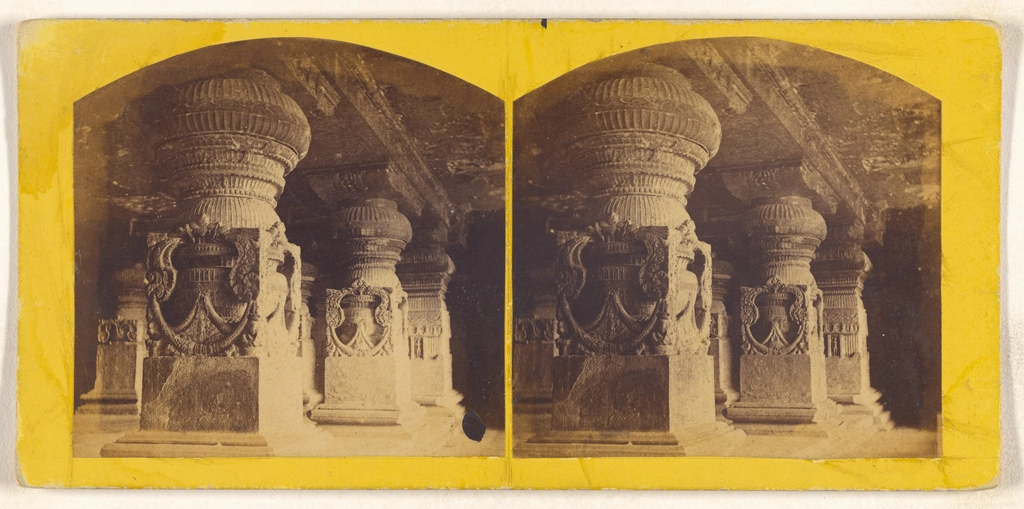
These caves are the earliest excavations at Ellora, generally dated between the 6th and 8th centuries CE, and they primarily belong to the Mahayana and later Vajrayana (Tantric) traditions of Buddhism.
Here is a breakdown of their features and key caves:
General Features of Buddhist Caves
A.Viharas and Chaityas:
- Most of the Buddhist caves are Viharas (monasteries or monastic dwellings), consisting of a central pillared hall, a shrine at the back, and smaller cells for the monks carved into the side walls.
- There is only one Chaitya (prayer hall) in the Buddhist group: Cave 10 (Vishwakarma).
B. Iconography:
- The caves feature large, serene rock-cut sculptures of Buddha in various mudras (hand gestures).
- They also extensively feature Bodhisattvas (like Padmapani, Vajrapani, and Manjushri), who represent compassion and aid the path to enlightenment.
- The later caves (11 and 12) show the introduction of female deities (Tarā and other Dharinis), reflecting the developing Vajrayana form of Buddhism
C. Architecture:
- They represent a transitional phase in Indian rock-cut architecture, moving towards more elaborate, multi-storey structures.
- The architectural plan often employs the Mandala (sacred diagram) as a governing framework, especially in the arrangement of the main shrine and the deities surrounding the Buddha.
Highlights of Key Buddhist Caves
1. Ellora Cave 10: The Vishwakarma Cave (Chaitya)
- Name: Also called the Sutar ki Jhopadi (Carpenter’s Hut). This name is due to its most famous architectural feature: the rock-cut roof is carved to meticulously imitate wooden beams or rafters.
- Function: It is the only Chaitya-Griha (prayer hall) in the Buddhist group.
- Structure: The spacious hall has two side aisles separated by 28 octagonal pillars, leading to an apse (semi-circular end).
- Shrine: At the far end stands a large rock-cut stupa, with a colossal 15-foot-tall seated Buddha carved into its front.
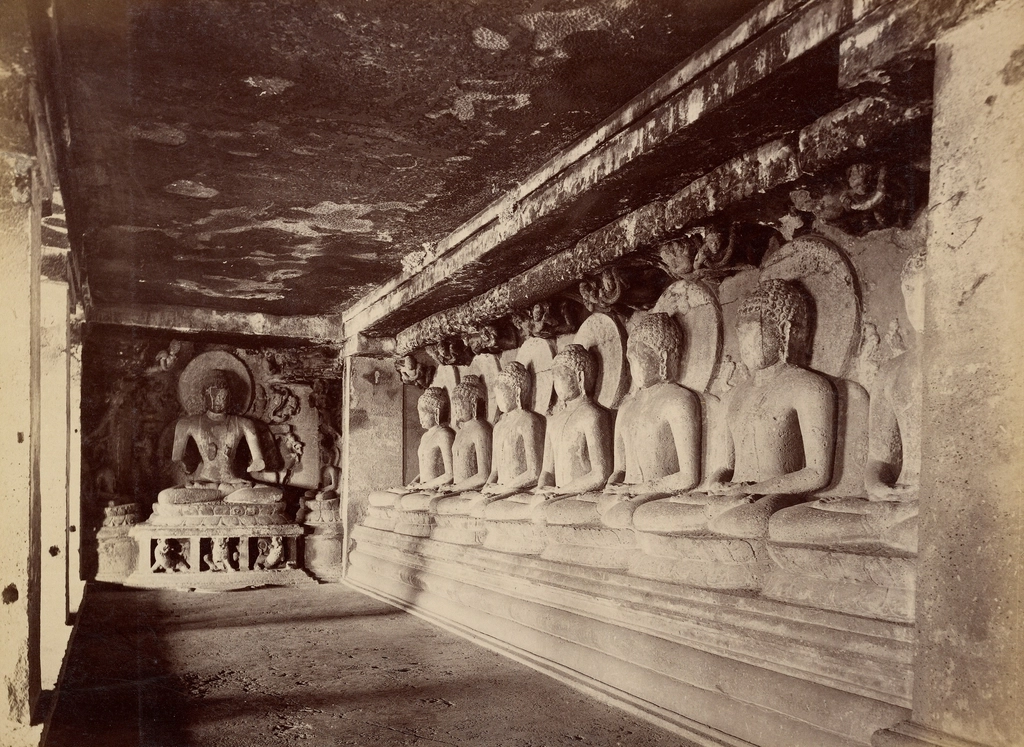
2. Ellora Cave 5: Maharwada Cave
- Feature: This is the largest single-storey Vihara.
- Structure: It has a unique, long hall with two parallel rows of low, rock-cut benches. This suggests it may have served as a large assembly hall or a refectory (dining hall) for the monastic community.
3. Cave 11 & 12: Dho Tal and Teen Tal (Multi-Storeyed Monasteries)
These caves mark the shift to more complex, multi-level structures.
- Cave 11 (Dho Tal – Two Storeys): The name Dho Tal (Two Storeys) is a misnomer, as excavations revealed it actually has three storeys.
- Cave 12 (Teen Tal – Three Storeys): This is the largest monastic complex at Ellora.
- It is a magnificent, three-storeyed Vihara with a main hall on each level.
- The upper floor is particularly impressive, featuring a huge hall divided into aisles by 40 pillars, with multiple sculptures of the Buddha and Bodhisattvas, sometimes arranged in the Mandalic pattern.
4. Ellora Hindu Caves (13–29)
The Ellora Caves’ Hindu group, encompassing Caves 13 through 29, is a remarkable collection of rock-cut temples, mainly dedicated to Lord Shiva, which demonstrate the zenith of ancient Indian art and architecture. They were primarily excavated during the Rashtrakuta dynasty (c. 600-1000 CE).
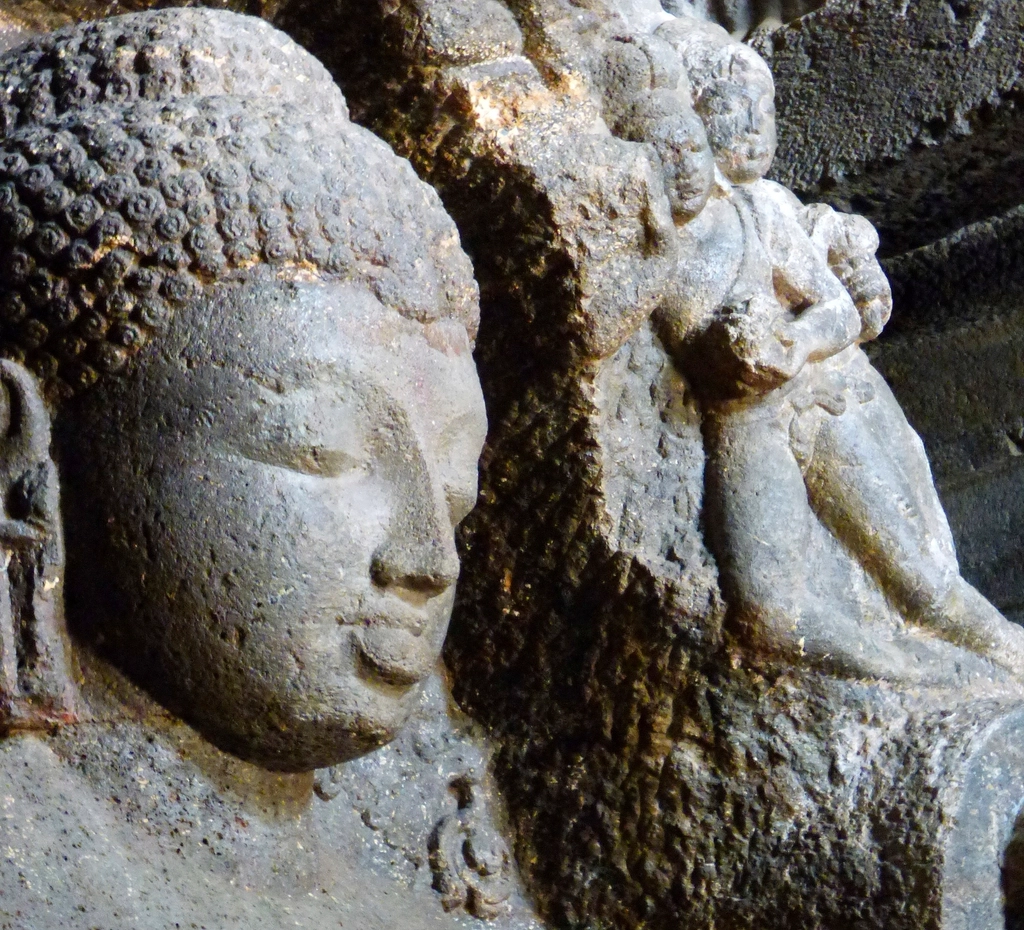
The most celebrated and significant caves within this group include:
- Cave 16: Kailasa Temple (Kailasanatha)
- Features: This is the undisputed centerpiece of Ellora and one of the world’s largest monolithic rock-cut excavations. It is a massive temple carved entirely out of a single piece of rock to represent Mount Kailash, Lord Shiva’s mythical abode.
- Architecture: It features a multi-storied structure, a U-shaped courtyard, a Nandi mandapa, a main temple, and intricate carvings detailing scenes from the Ramayana and Mahabharata. Its sheer scale and artistic detail are unparalleled.
- Cave 15: Dashavatara Temple
- Features: Originally a Buddhist Vihara, it was converted into a Hindu temple during the Rashtrakuta period. It is a two-storied structure, notable for its grand scale and detailed sculptures.
- Sculptures: It is famous for its elaborate panels depicting the ten avatars (incarnations) of Lord Vishnu (hence the name Dashavatara). Other prominent carvings depict stories of Lord Shiva, such as the dramatic Narasimha (man-lion avatar) panel and scenes like Shiva dancing the Tandava.
- Cave 21: Rameshwara Leni
- Features: An early Hindu excavation credited to the Kalachuri dynasty. It is known for its beautiful sculptures and the inclusion of powerful female deities.
- Sculptures: The entrance is guarded by large sculptures of the river goddesses Ganga (on her makara) and Yamuna (on her tortoise). Inside, there are notable panels of the Sapta Matrika (seven mother goddesses), the marriage of Shiva and Parvati (Kalyanasundara), and Ravana shaking Mount Kailash.
- Cave 29: Dumar Lena
- Features: Also known as the Sita-ka-nahani, this is one of the largest and earliest Hindu caves. It is architecturally similar to the Elephanta Caves.
- Architecture & Sculptures: The main hall is arranged on a cruciform (cross) plan with a central shrine housing a Shiva Linga and four entrances, each flanked by colossal door guardians (dvarapalas). The walls feature huge sculptural panels depicting various episodes of Shiva’s life, including the marriage of Shiva and Parvati and Shiva and Parvati playing the dice game. It is situated next to a natural waterfall.
Other caves in the group (13, 14, 17-20, 22-28) also contain shrines, halls, and monasteries, primarily dedicated to Shiva, Vishnu, and Shakti, reflecting a period of religious harmony and artistic vibrancy.
5. Jain Caves (30–34)
The Jain Caves (Caves 30–34) are the final group of rock-cut monuments at the famous Ellora Caves complex in Maharashtra, India. They were carved between the 9th and 10th centuries CE and belong to the Digambara sect of Jainism.
While smaller in scale compared to some of the Hindu and Buddhist caves, they are renowned for their highly detailed and intricate carvings, as well as the surviving traces of ceiling paintings.
Here is a breakdown of the key caves in this group:
- Cave 30 (Chhota Kailasa):
- It is named the “Little Kailasa” because it is an unfinished monolithic rock-cut temple that was clearly modeled after the much larger Hindu Kailasa Temple (Cave 16).
- It resembles a structural temple with a tower (shikhara) and has images of the Tirthankaras, including Mahavira seated on a lion throne.
- A massive rock-cut elephant in the courtyard also draws a parallel to the main Kailasa Temple.
- Cave 32 (Indra Sabha):
- This is the largest and finest of the Jain caves.
- It is a magnificent double-storeyed cave temple, though the ground floor is largely incomplete.
- The courtyard features a majestic monolithic elephant and a huge monolithic pillar, known as a Manastambha (Pillar of Honor) topped with four seated Jina figures facing the cardinal directions.
- The upper floor is richly decorated with elaborate carvings, including the main shrine housing a figure of Lord Mahavira.
- Notable sculptures include the yaksha Matanga (the God of Wealth) seated on an elephant and the yakshi Ambika (the Goddess of Prosperity) seated on her lion under a mango tree.
- It is known as Indra Sabha (Assembly Hall of Indra) because the Matanga figure was mistakenly identified with the Hindu god Indra.
- This cave has some of the best-preserved paintings on its ceilings.
- Cave 33 (Jagannatha Sabha):
- This is the second largest Jain cave and is also double-storeyed.
- It is similar in plan to the Indra Sabha (Cave 32) and features well-preserved sculptures of Parshvanatha and Mahavira, the last two Tirthankaras.
- Caves 31 and 34:
- Cave 31 is a small, unfinished four-pillared hall and shrine.
- Cave 34 is a small cave, the last in the series, which has a shrine housing Tirthankaras. There is also a colossal rock-cut image of Parshvanatha on the hillside above this area.
The Jain caves, along with the Buddhist and Hindu caves at Ellora, are a UNESCO World Heritage Site, famous for illustrating the religious harmony and architectural brilliance that existed in ancient India.
Significance
- Demonstrates religious tolerance in ancient India.
- Showcases mastery in rock-cut architecture and sculptural art.
- A major attraction for art historians, archaeologists, and tourists alike.
Visitor Info
- Nearest city: Aurangabad
- Best time to visit: November–February
- Nearby sites: Ajanta Caves (100 km away), Daulatabad Fort, Bibi Ka Maqbara
Would you like me to create a travel guide for visiting Ellora (with routes, entry fees, and nearby stays), or a historical summary focusing on its art and architecture?
- iPhone 17 Pro Max Launch Date: 10 Reasons to Wait for iPhone 17 Series
- How to buy a perfect jacketcoat trouser | Josforup
- क्या BRICS देश मिलकर अपनी मुद्रा बना सकते है?
- Best Website Speed Test
- JPG to PNG to WEBP converter
- Convert Any File Into PDF
- Facts About Tomatoes That You May Not Know
- Age Calculator
- Vicky Kaushal & Katrina Kaif Announce Pregnancy: A New Chapter Begins
Table of Contents
4 February 5 Star Bharat NCAP SUV India amazing fact Android Phones Apple iPhone 17 Launch Date Cheap Products under GST Close the Care Gap Costly Products GST 2025 Current Affairs 2025 Design Exams EXCELLENT SCENARIO fact Flagship Killer GK Notes for Exams GST 2025 GST on Electronics 2025 GST on Food Items GST on Luxury Goods GST Rate Cut 2025 GST Updates India Health hindi important questions india Indian railway iPhone 17 Pro iPhone 17 Pro Max iPhone 17 Pro Max Camera Mobile Offers 2025 New GST Slabs India OnePlus Performance Republic Day 2025 rrb bank SCO Members Smartphone Snapdragon 8 Elite Gen 5 Some Questions Tax Free Items India Tech News Technology United by Unique We can. I can तथ्य